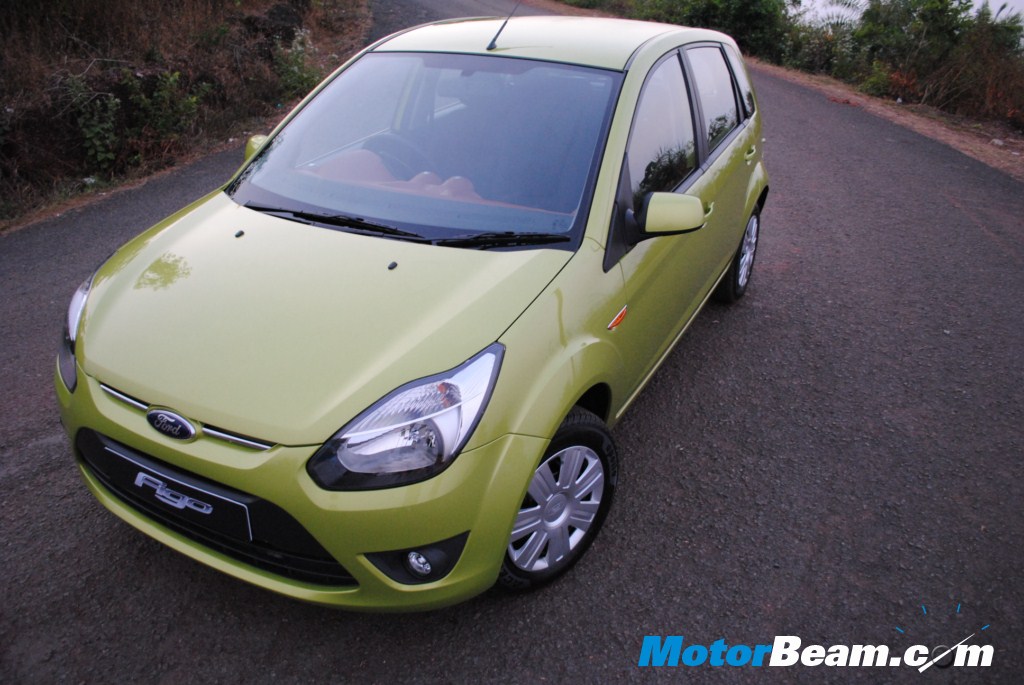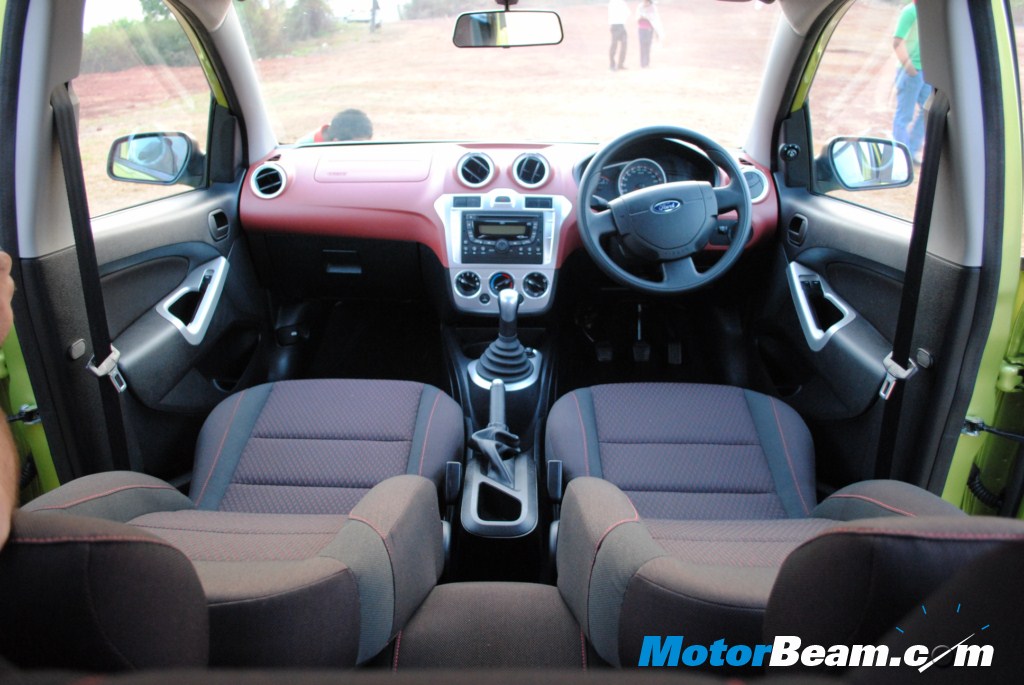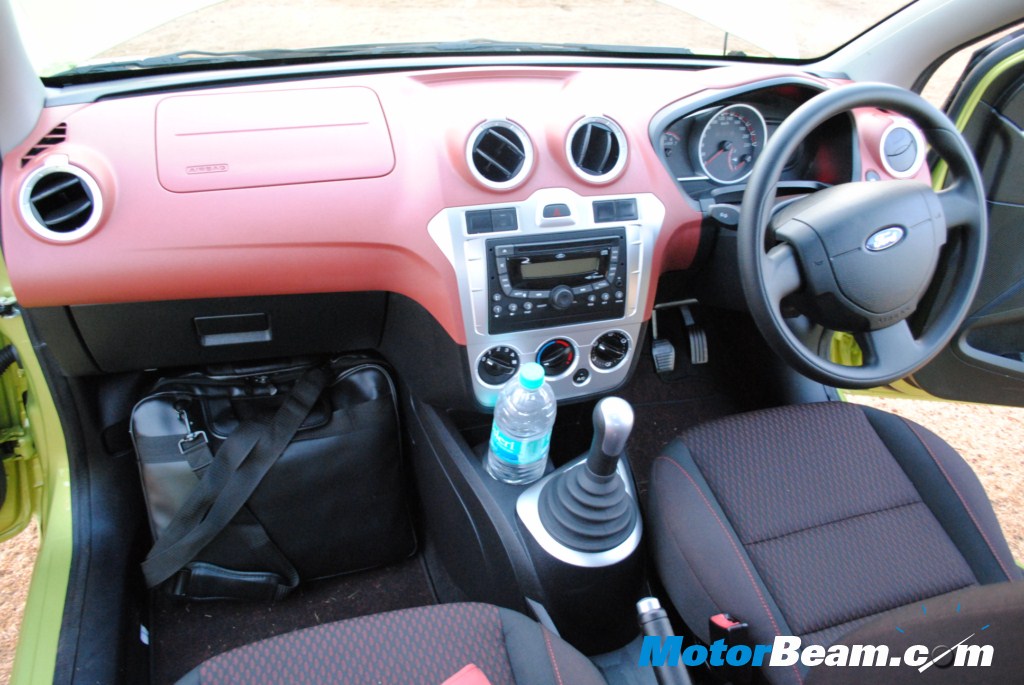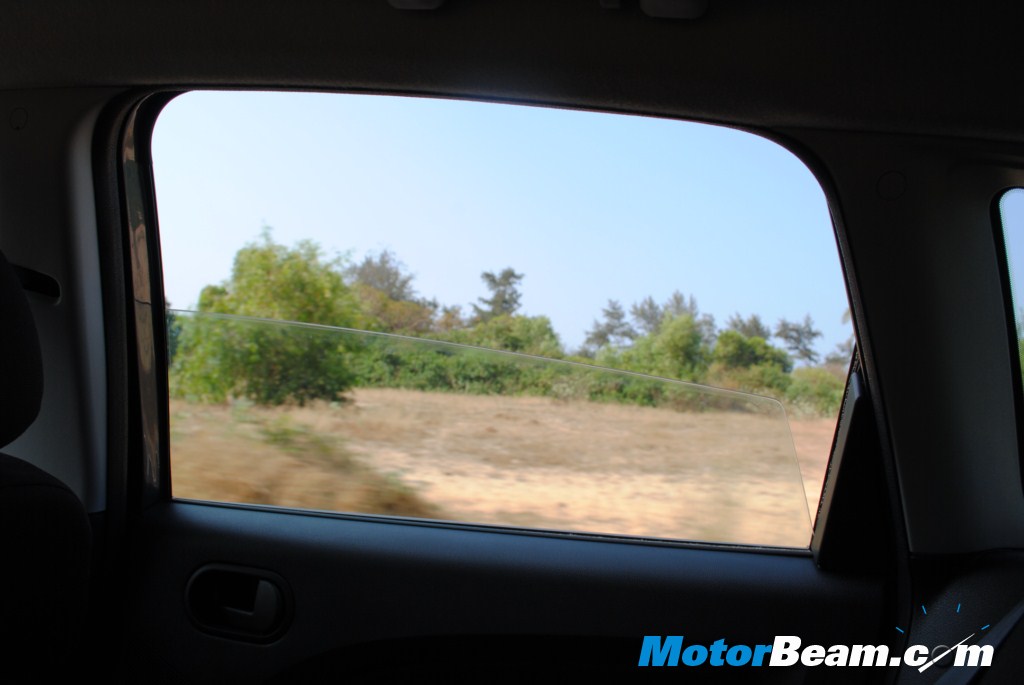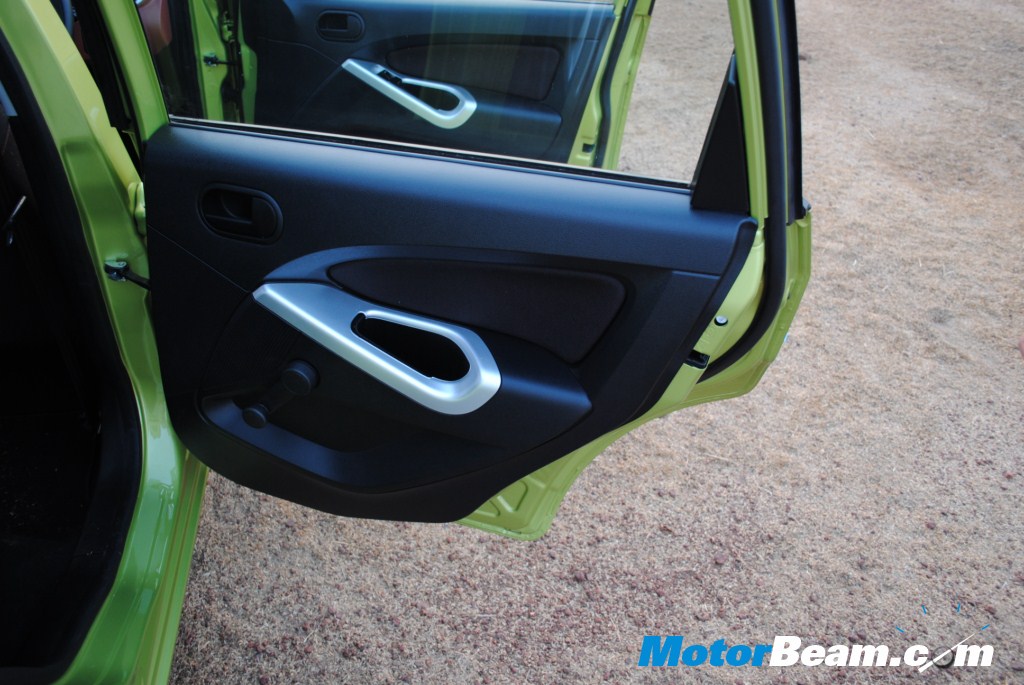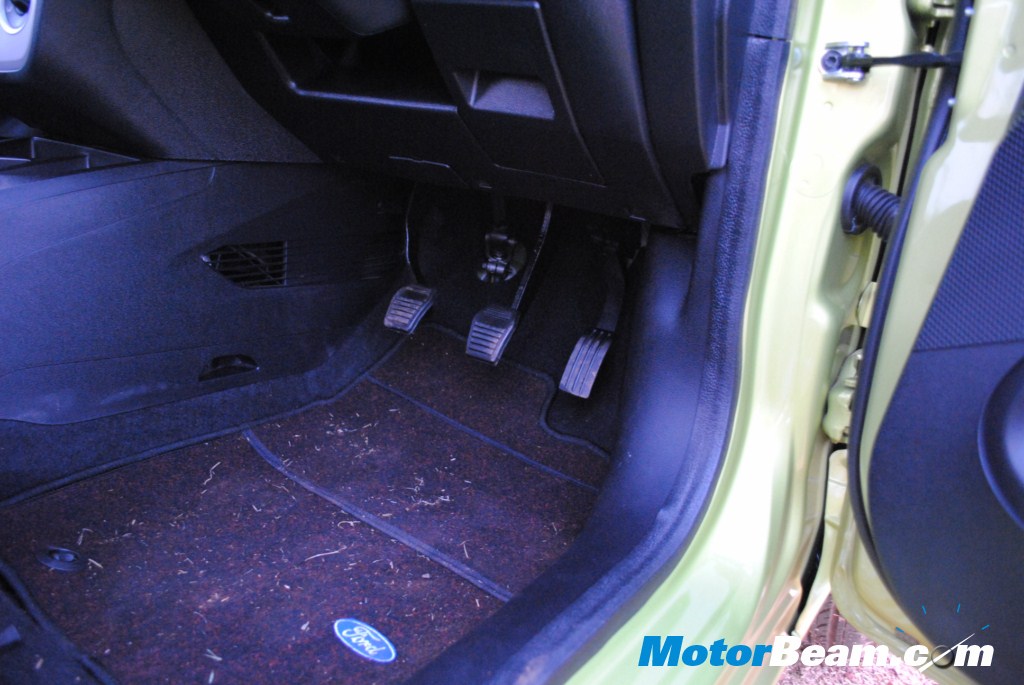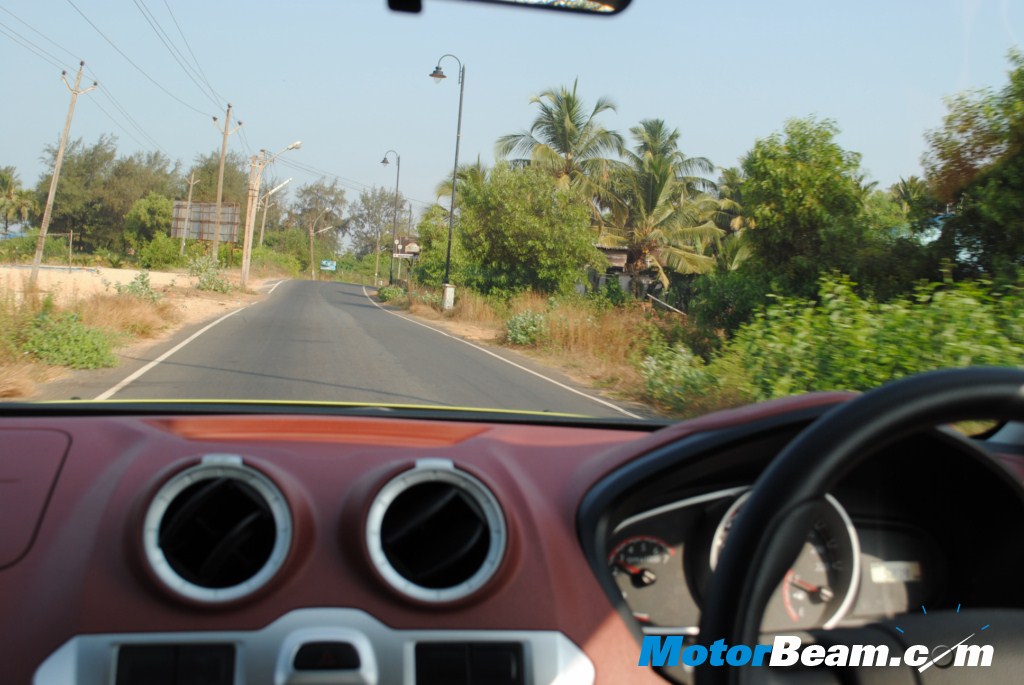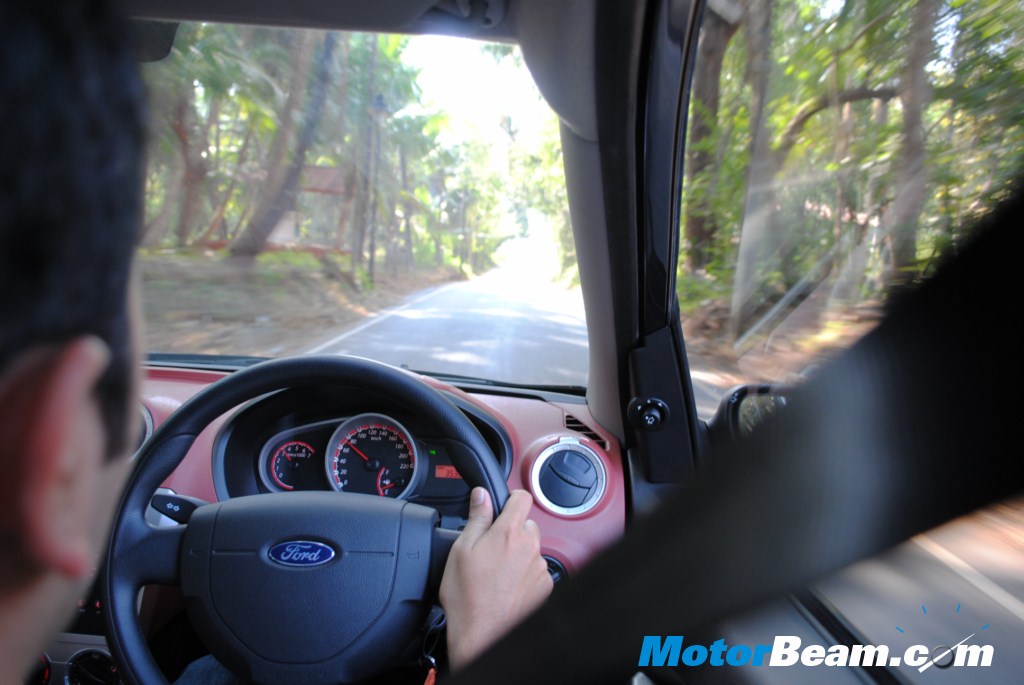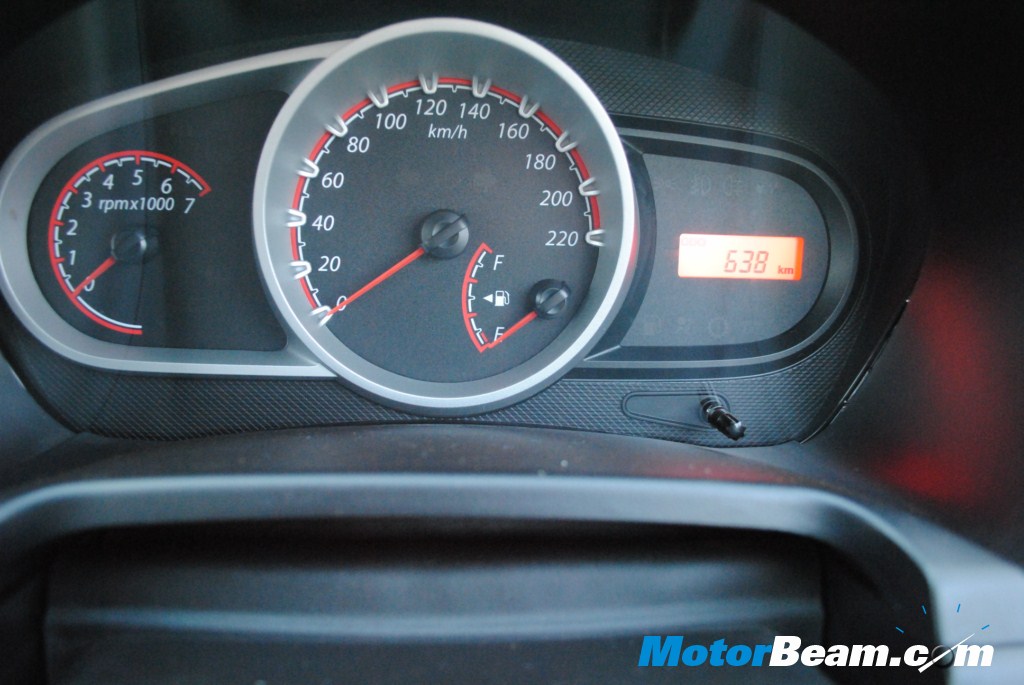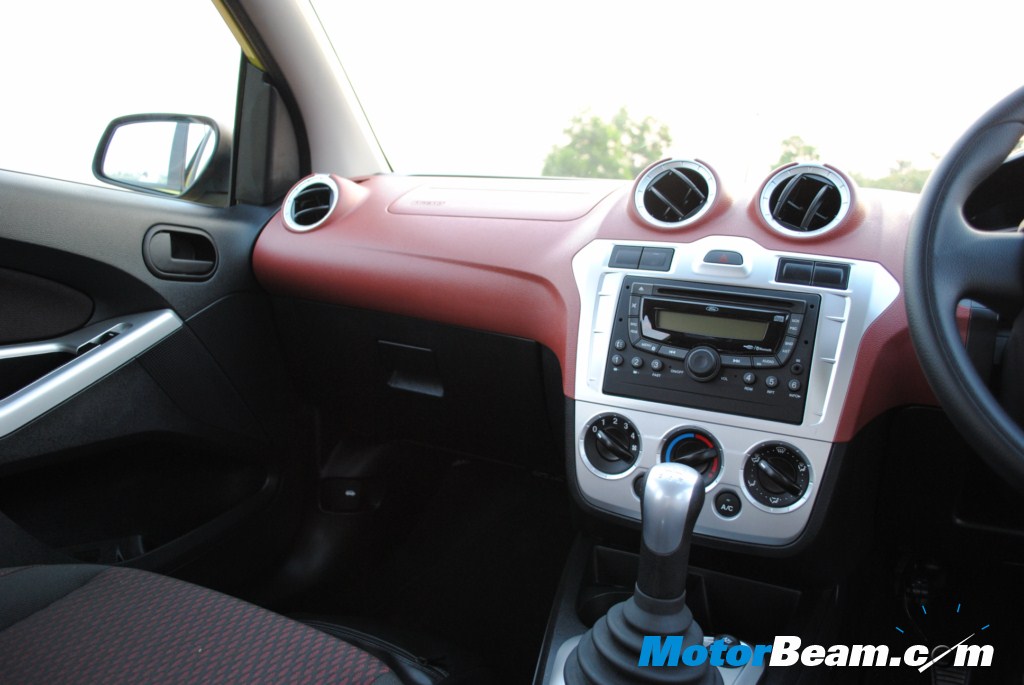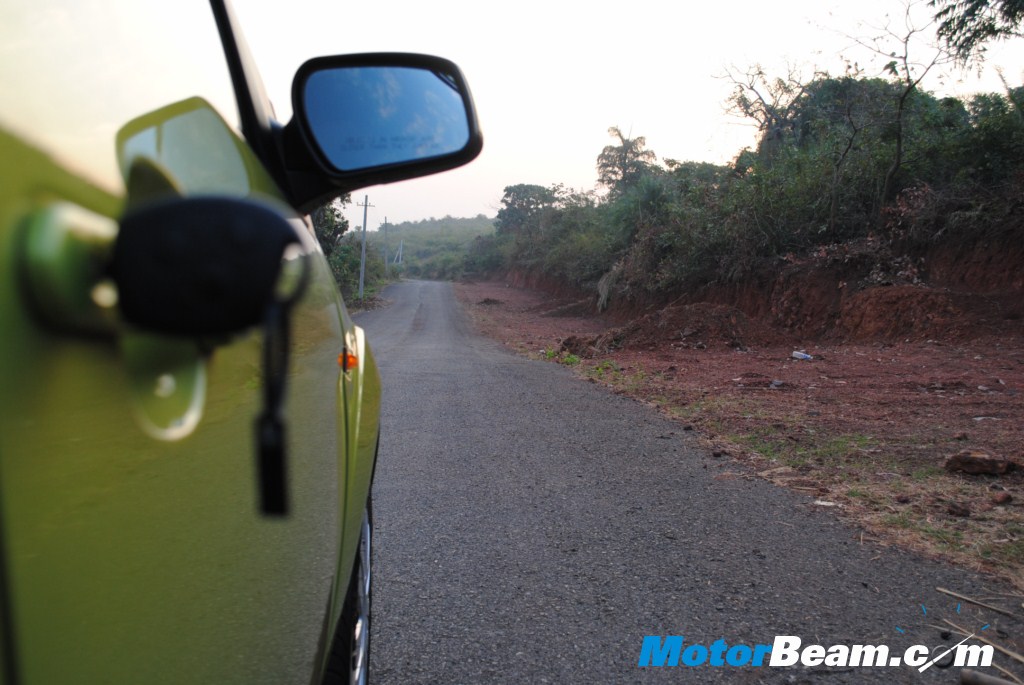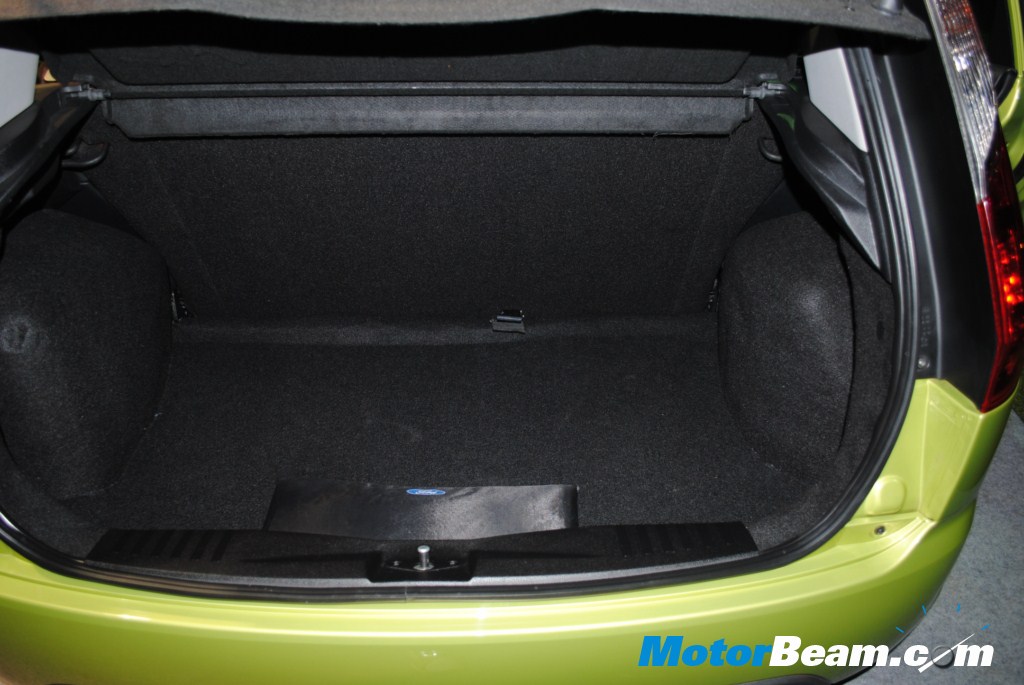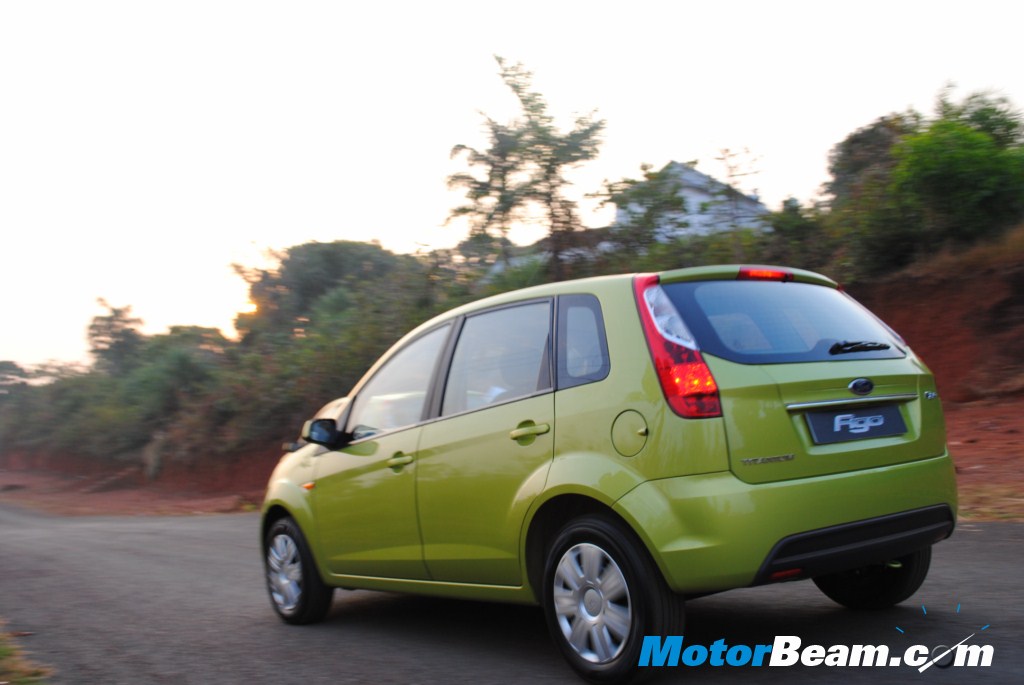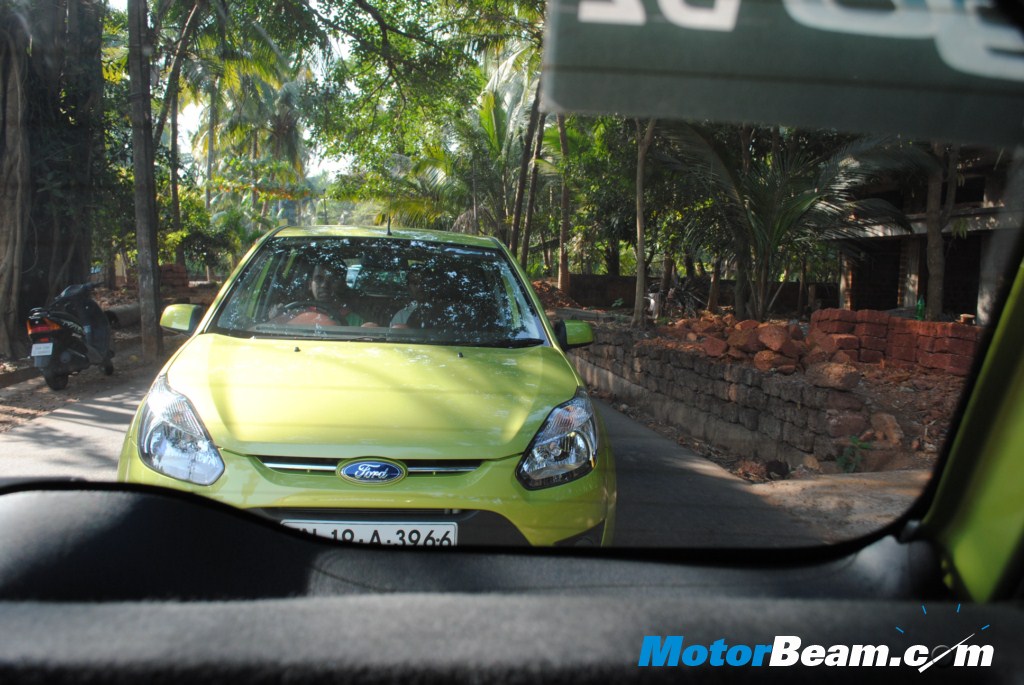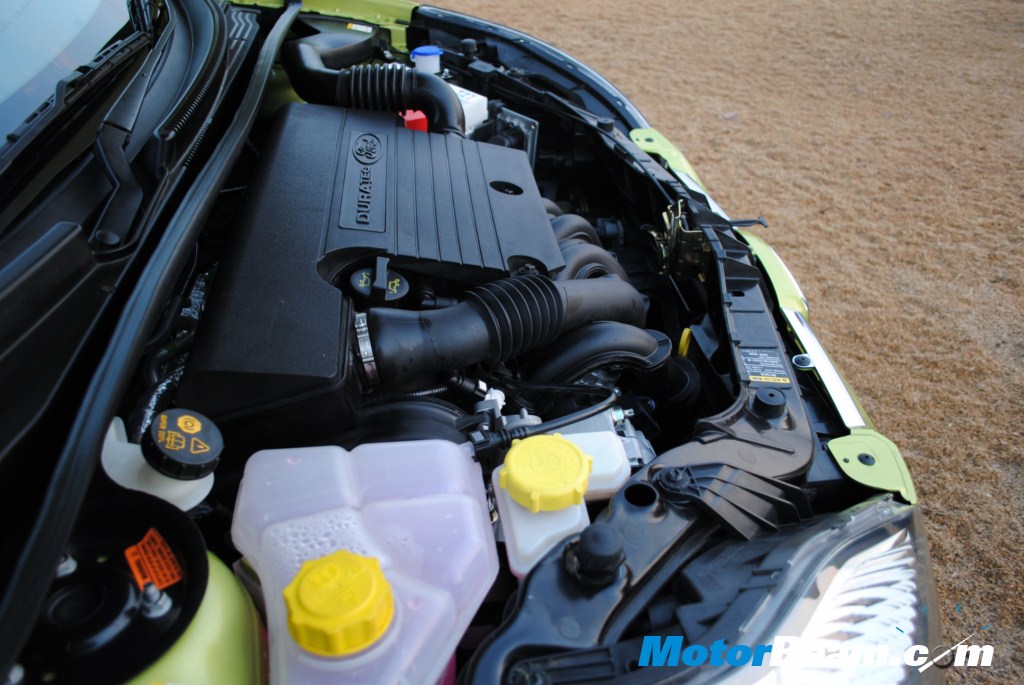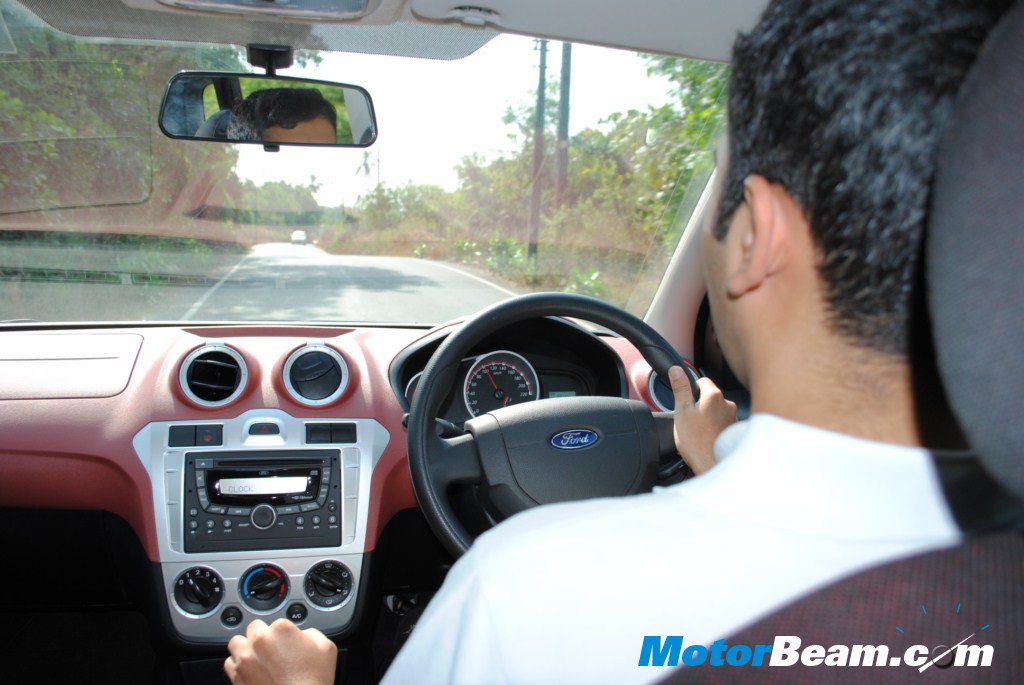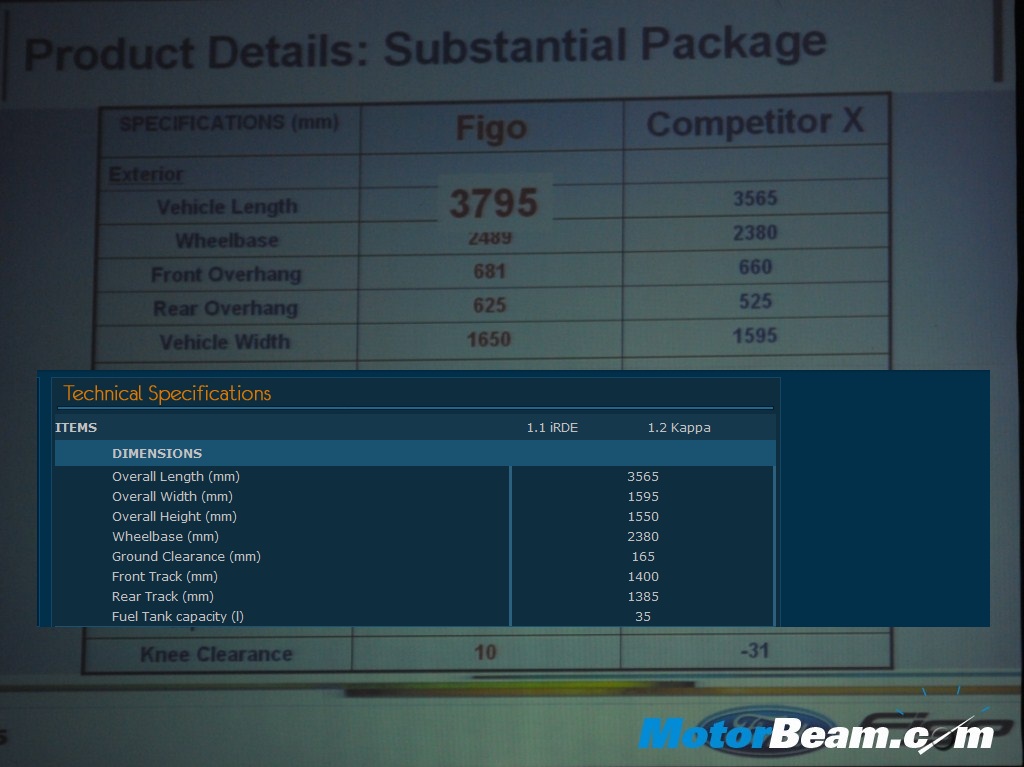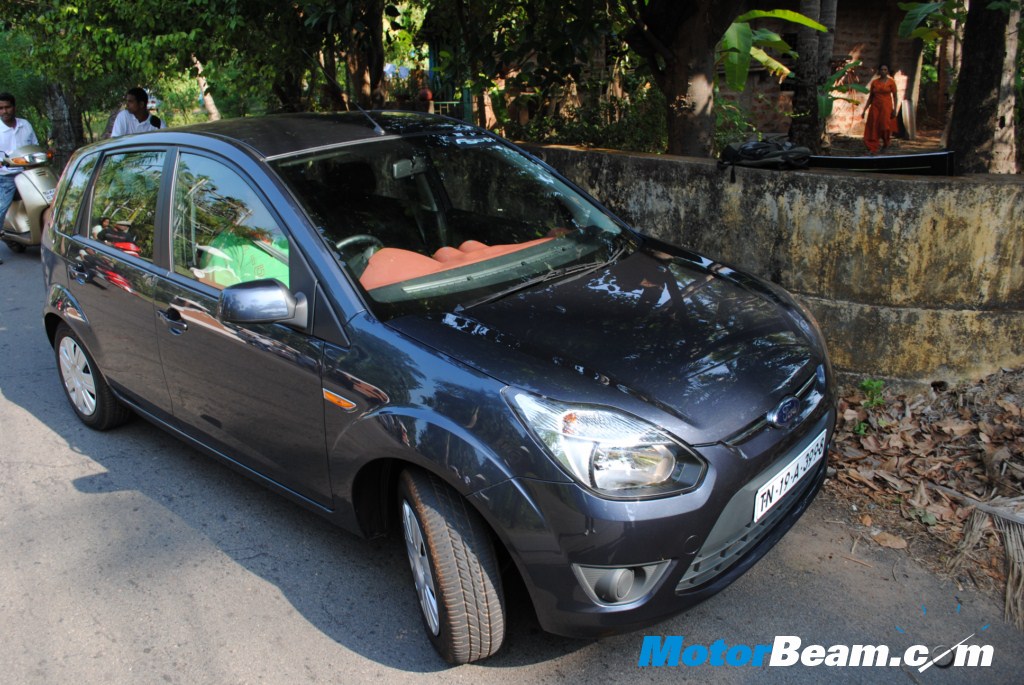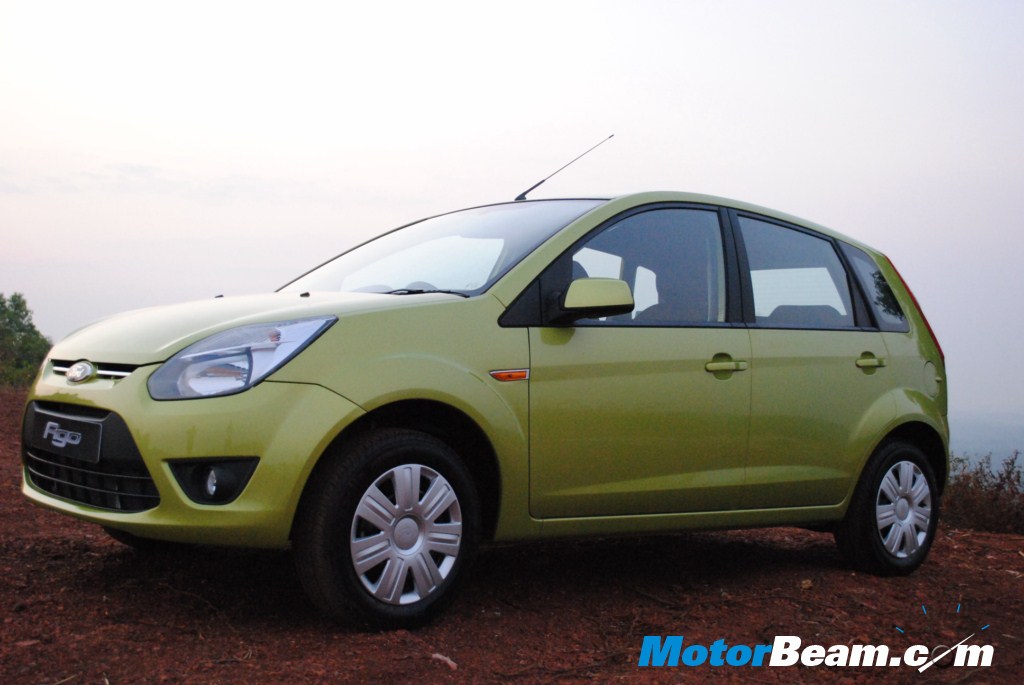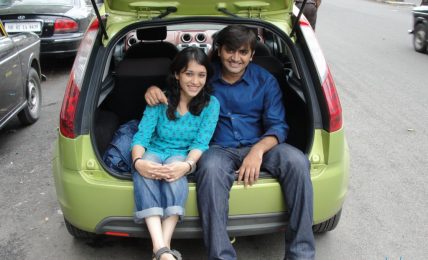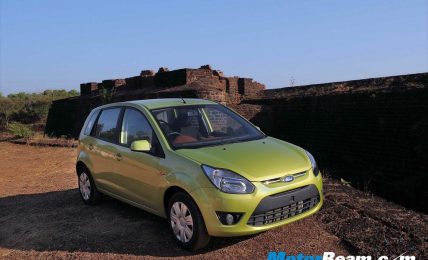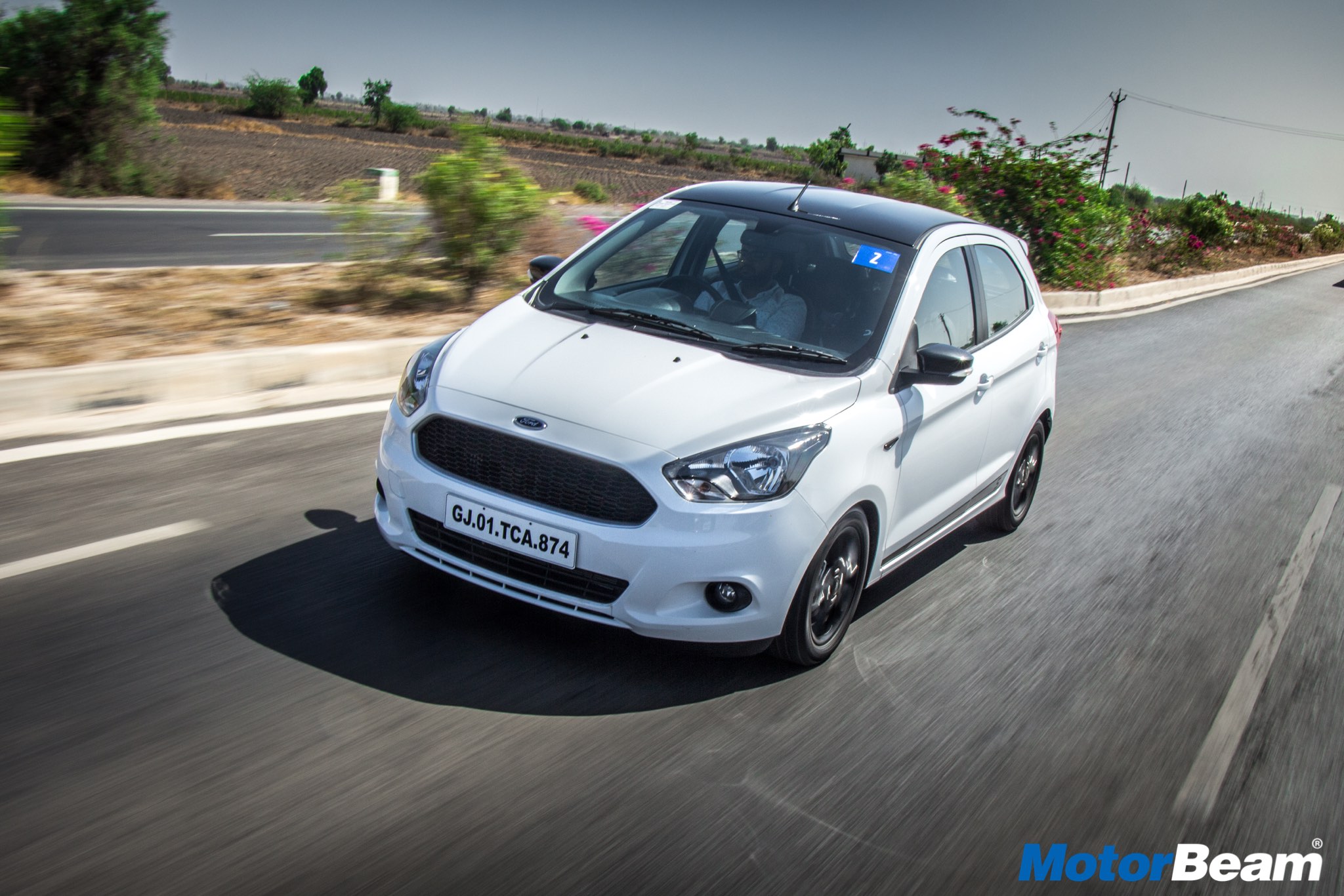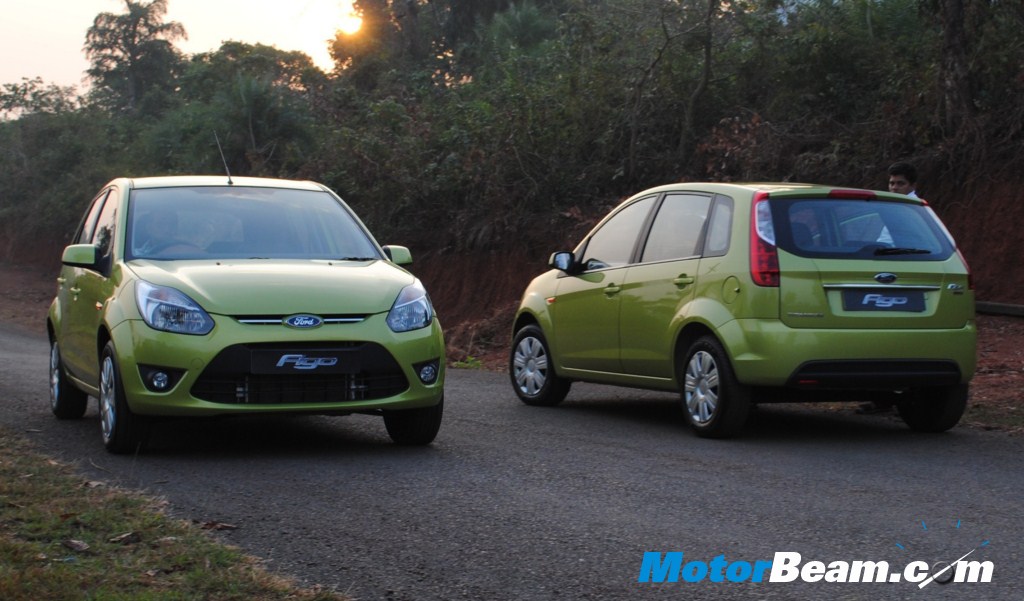
Car Tested: 2010 Ford Figo 1.2L Duratec, 1.4L Duratorq Titanium
Price ex-showroom, Delhi: 4.43 lakhs (top-end petrol), 5.30 lakhs (top-end diesel)
Small cars account for 70% of the total market pie and with our government being hell bent on encouraging small cars in the country, every manufacturer is in the process of having one in their portfolio. The next small car to grace our roads will be the Ford Figo and we had a chance to fathom the car in depth in Goa. During our press drive we came to know a lot about the Ford Figo and although the company hasn’t revealed the pricing yet, something makes us feel the car will be priced competitively.
Exteriors – Small is beautiful. But that doesn’t necessary hold true for the Kinetic designed Figo. The car has been designed in a way that it will please most and offend few. There is no love it or hate it feeling when you gawk at the Figo. It is quite evident the car draws its visual influence from the Fusion. After all the Ford Figo is based on the same platform. Some profiles of the car can some times fool your retina in registering the Figo as a Fusion. However Fusion genes aside, the Figo looks like a typical Ford model. The grille, wheel caps and the mirrors are a signature of the Ford design theme. The tower tail lamps are not the most handsome looking feature but slowly and surely the looks grow on you.
Interiors – Ford had kept the interiors a huge mystery till the press drives and although there was suspense, we guessed the interiors would draw cues from the Fiesta. However we were a little surprised when we saw the coral colours used on the dashboard. The Figo design team must have spend endless hours in getting that shade, we are sure many would prefer plain and simple black (yes Ford lets you choose the colour of your dashboard on the Figo [Thank God for small mercies]).
The front seats are very supportive but the back seats felt better as far as comfort is concerned. Legroom was decent (not class leading but better than most other hatches around) and the headroom was good enough to accommodate a 6 feet 2 incher without changing the structure of his spine. However the integrated headrests are a disappointment and so are the lack of rear power windows.
The structure of the rear door does not permit the rear windows to wind down below 50% as can be seen in the above picture. Hence the company doesn’t find it feasible to offer power windows at the rear.
Built Quality – One of the strongest points of the Figo is undoubtedly the way it has been put together. There are absolutely no squeaks or rattles (something which the Maruti Swift is very famous for). The doors shut with a commanding thud and the paint quality (some new technology here) is absolutely delicious. Though the test cars were pre-production units, we could not find a single fault with the build of the machine (except maybe the lack of sufficient rubber on the rear door near the window pane).
The footwell seemed to be a little narrow but after logging in a few kilometers you might just forget about it.
All type of NVH (except the engine which was quite audible) were subdued on our test cars. Ford has done an excellent job in removing the road, wind and tyre noise from creeping into the cabin. However the engine noise still manages to clutter in, specially in the diesel.
On the Move – Getting into the car might not be the easiest on first attempt as this Ford is not the tallest of hatches around, but once you get used to it you won’t find a fault with it. You sit relatively lower than competitor cars but even then the Figo will never scrap a bump. The steering feels moderately heavy on parking speeds and as speeds built up, the steering feels just right for a car packing in 70 horses under its belly. Boot release button resides on the dashboard and how we hope that was the start button instead (James Bond style). Mirror adjustments are electrical on the high end variants and feel perfect in reach which is an excellent thought by Ford engineers. The gearbox feels butter smooth and shifting gears is effortless. Infact you don’t even realise when you shift into reverse, that’s how smooth the gearbox felt.
The Figo comes with distance to empty feature which gives repeated warnings to alert the driver when the range drops below 80 kms. The indicator and wiper stalks are on the opposite side and require getting used to. Wiper blades could have been the latest twin blade type. Ford has clearly emphasised on low cost of ownership and thus the omission of twin blade wipers is obvious as they are more expensive to replace.
The hood opening lever resides on the co-passenger side (just like the Fiesta). The headlamp controls are Skoda/Mercedes type and you need to move the knob to switch on the lights. A particular mention needs to be made about the fantastic air conditioning system on the Figo. The AC unit is an absolute chiller and even with the hot Goan sun on top of us, the Figo’s AC had to be turned off while running on mode 2. We wonder what will happen at mode 4, we might just turn into ice cream, who knows!
The Figo comes with keyless entry. The key houses three buttons, one to open the driver side door, other to open all the 4 doors and the last button to open the boot.
The boot is one of the biggest in the segment, but the humps on either side can limit load carrying capacity.
Ride, Handling and Braking – Fords have it in their DNA to score high on these parameters and the Figo was no different. The Fiesta underpinnings clearly showed and the Figo behaved like a big car. Even on some rough patches the competent suspension was unmoved and transferred none of the jerks to the passengers. We are yet to experience any small car (except the Grande Punto) to have such fantastic ride quality. Handling is sharp and the steering offers good feedback. We did not have much chance to fling the car into corners at high speeds but we feel the handling to be very good. Just like the Fiesta, the Figo manages to ride and handle well at the same time which is a rare case for a small car in our country. Running on 175mm width Acelere from Apollo, our test car equipped with ABS stopped right in its track. The tyres are not of the best quality though and some tyre noise was evident on hard braking. Overall the ride, handling and braking of the Figo are one of the strongest points of this blue oval. Although the company intends to position the car as an entry level small car, the driving dynamics are of a premium hatch. Unfortunately not many buyers look at handling and braking while making a purchase decision, but the fantastic ride quality can be a huge USP for the Figo.
We are yet to experience any small car (except the Grande Punto) to have such fantastic ride quality. Handling is sharp and the steering offers good feedback. We did not have much chance to fling the car into corners at high speeds but we feel the handling to be very good. Just like the Fiesta, the Figo manages to ride and handle well at the same time which is a rare case for a small car in our country. Running on 175mm width Acelere from Apollo, our test car equipped with ABS stopped right in its track. The tyres are not of the best quality though and some tyre noise was evident on hard braking. Overall the ride, handling and braking of the Figo are one of the strongest points of this blue oval. Although the company intends to position the car as an entry level small car, the driving dynamics are of a premium hatch. Unfortunately not many buyers look at handling and braking while making a purchase decision, but the fantastic ride quality can be a huge USP for the Figo.
Performance : – Although we did not get to drive the cars for a long duration, the initial impressions of both the engines are very positive. Both the powerplants are Bharat Stage IV compliant and expected to return good fuel mileage figures.
1.2L Duratech Petrol – Every small car needs to have a sub 1200cc engine and the Figo follows the herd. The 4-cylinder SIGMA engine features an optimized bore, a unique cylinder head design and a revised compression ratio of 9.75 compatible with Indian fuel quality. It delivers 71.35 PS @ 6250 rpm and max net torque of 102Nm @ 4000 rpm. What this translates is decent power on the road for a car of this size. Mind you this engine is no drag material and pulls decently at low speeds. We would have liked more torque lower down but with decent mid-range thrust the watered down engine from the Fiesta/Fusion does a decent job. We particularly liked the noise made by the engine at high revvs, something which we never imagined before heading for the drive. This engine though a 1.2 unit purrs like a cat above 5000 rpm (purring does not necessary translate into fast or quick), and with the NVH well sorted out, the engine is the only thing you can hear.
1.4L Duratorq Diesel – This engine is a total gem. Famous for its high fuel efficiency in the Fiesta and later on offered in the Fusion and the Ikon, the Duratorq TDCi delivers 69 PS at 4000 rpm and 160 Nm at 2000 rpm. Keeping the figures on paper aside, the engine works very well in the Figo with absolutely zilch turbo lag. Tap the throttle in any gear and the engine responds with a sense of urgency. Though there is no kick present (like in the Swift), power delivery is linear and the torque is well spread out. Put the car in third gear and it will endlessly move at 21 kmph without your foot on the accelerator, F-A-N-T-A-S-T-I-C.
Conclusion – With the Figo, Ford means business and it is quite evident in the way the car has been designed. Earlier on Ford cars were expensive to maintain and this is something which doesn’t hold true for new generation models. The company has insured low cost of ownership by adopting a new cost effective design approach. The Figo will be available in four variants – base, mid, high end (platinum) and optional pack high plus (titanium). Other than having fantastic driving dynamics, the Figo boasts of many standard features on a small car such as dual airbags, ABS, audio system with AUX, electrically adjustable rear view mirrors, distance to empty indication, adjustable drivers seat, fold down rear seats, lane departure signal and rear wiper/defogger. Pricing has not been disclosed yet but the presentations displayed by the company prior to the press drives clearly hints at the Hyundai i10 to be a competitor (as can be seen in the picture above). If that is an indication of the pricing, then Ford India has a sure shot winner in its portfolio.
Whats Kool
- Handling
- Ride quality
- Smooth gearshift
- Built quality
- Diesel engine performance
- Petrol engine sound at high revvs
- Cost of ownership (estimated)
- 2 years/1,00,000 kms warranty
- Ford 24 hours road side assistance
Whats UnKool
- Lack of adjustable head rests
- Indicator/Wiper stalks on the wrong side
- Rear window goes only half way down
- Boot has two humps on each side
- No audio controls on steering wheel
Ford Figo Specifications
- Engine: 1200cc Duratech Petrol, 1400cc Duratorq Diesel
- Power: 71.35ps @ 6250 rpm (petrol), 69 PS @ 4000 rpm (diesel)
- Torque: 102Nm @ 4000 rpm (petrol), 160 Nm @ 2000 rpm (diesel)
- Transmission: IB5 Five Speed Manual Transmission
- Top Speed: 160kmph (est)
- 0-100kmph: 15.50 seconds (petrol), 15.80 seconds (diesel)
- Fuel Consumption: 14 kmpl (petrol), 18 kmpl (diesel) (est)
- Suspension: Independent, MacPherson struts (Front), Non independent, Twist beam with twin tube dampers (Rear)
- Tires: 175/65/14 Tubeless Radials
- Brakes: 239mm x 20mm discs (Front), 258mm and are 22mm discs (ABS Front), 180mm x 30mm drums ( Rear) 203mm x 33mm drums (Rear ABS)
- Safety: ABS, EBD, Dual SRS Front Airbags, Immobilizer
- EURO NCAP Rating: NA
Ford Figo Dimensions
- Overall length x width x height: 3795mm X 1680mm X 1427mm
- Wheelbase: 2489mm
- Ground clearance: 165mm
- Boot Volume: 285 liters
- Fuel Tank Capacity: 45 litres
- Kerb Weight: 1100kgs (est)


